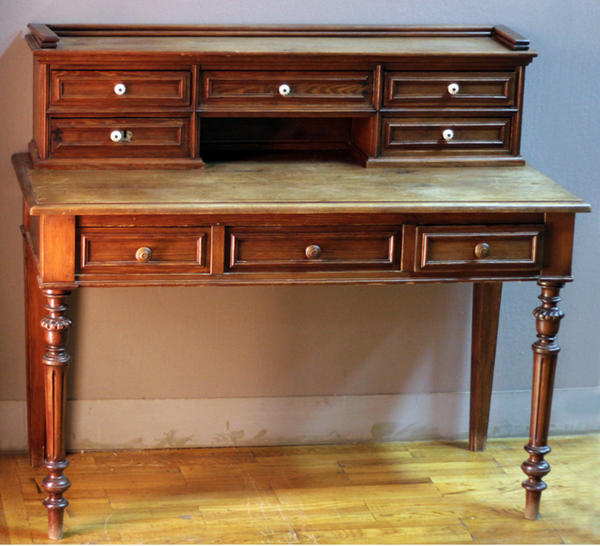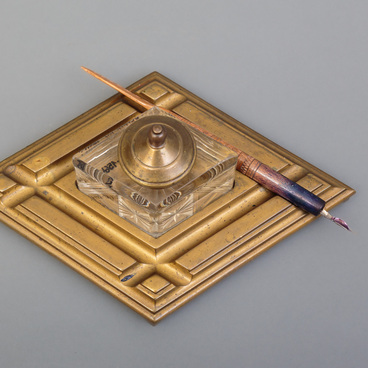A bureau is a type of a desk surmounted by drawers and usually with a hinged lid. This type of furniture appeared in France at the turn of the 18th century and carried on the idea of a chest of drawers on legs.
There are two versions that explain how the bureau was created. One is that the closed lid of the desk is inspired by the hoods used by alchemists to hide the traces of their experiments from prying eyes. The second version is more plausible and refers to the prototype of the bureau as a slanted lid box.
In the 17th century, the layout of mansions did not have separate study rooms, so personal letters were written in the bedroom on the dressing table and replies were stored in boxes. The enlarged “boxes” mounted on a pedestal provided space for writing and storing letters as well as writing utensils. Moreover, in any bureau the cabinetmaker made secret compartments, the location of which he would only reveal to the client.
In the 18th century, when studies and boudoirs appeared, bureaus were moved into them. The word “bureau” comes from the French word for calfskin: it was used to upholster the flap or the sliding writing surface. Later on, it coined the name for the piece of furniture as a whole.
The first writing desks were common only in the homes of the nobility and in palace chambers. The pieces for dignitaries were made of ebony or mahogany and decorated with gilded bronze plaques, bronze or porcelain handles, rich inlays, carvings and marquetry.
The most common type was the “bureau de pente”, which had a hinged flap. The design without hinged parts, like the desk as we know it, was referred to as the “bureau plat”. The top with open or closed drawers transformed the “bureau plat” into the “bureau bonheur-du-jour” — “happy day bureau”.
In Russia, a bureau was originally a piece of furniture for a man’s study as a place to conduct business. Here the owner listened to the manager’s reports, gave orders, conducted business negotiations and correspondence; here he could simply relax reading a book. Soon boudoir models of the bureau for ladies appeared. As time went on, more modestly designed desks became available to a wide range of customers.
There are two versions that explain how the bureau was created. One is that the closed lid of the desk is inspired by the hoods used by alchemists to hide the traces of their experiments from prying eyes. The second version is more plausible and refers to the prototype of the bureau as a slanted lid box.
In the 17th century, the layout of mansions did not have separate study rooms, so personal letters were written in the bedroom on the dressing table and replies were stored in boxes. The enlarged “boxes” mounted on a pedestal provided space for writing and storing letters as well as writing utensils. Moreover, in any bureau the cabinetmaker made secret compartments, the location of which he would only reveal to the client.
In the 18th century, when studies and boudoirs appeared, bureaus were moved into them. The word “bureau” comes from the French word for calfskin: it was used to upholster the flap or the sliding writing surface. Later on, it coined the name for the piece of furniture as a whole.
The first writing desks were common only in the homes of the nobility and in palace chambers. The pieces for dignitaries were made of ebony or mahogany and decorated with gilded bronze plaques, bronze or porcelain handles, rich inlays, carvings and marquetry.
The most common type was the “bureau de pente”, which had a hinged flap. The design without hinged parts, like the desk as we know it, was referred to as the “bureau plat”. The top with open or closed drawers transformed the “bureau plat” into the “bureau bonheur-du-jour” — “happy day bureau”.
In Russia, a bureau was originally a piece of furniture for a man’s study as a place to conduct business. Here the owner listened to the manager’s reports, gave orders, conducted business negotiations and correspondence; here he could simply relax reading a book. Soon boudoir models of the bureau for ladies appeared. As time went on, more modestly designed desks became available to a wide range of customers.



